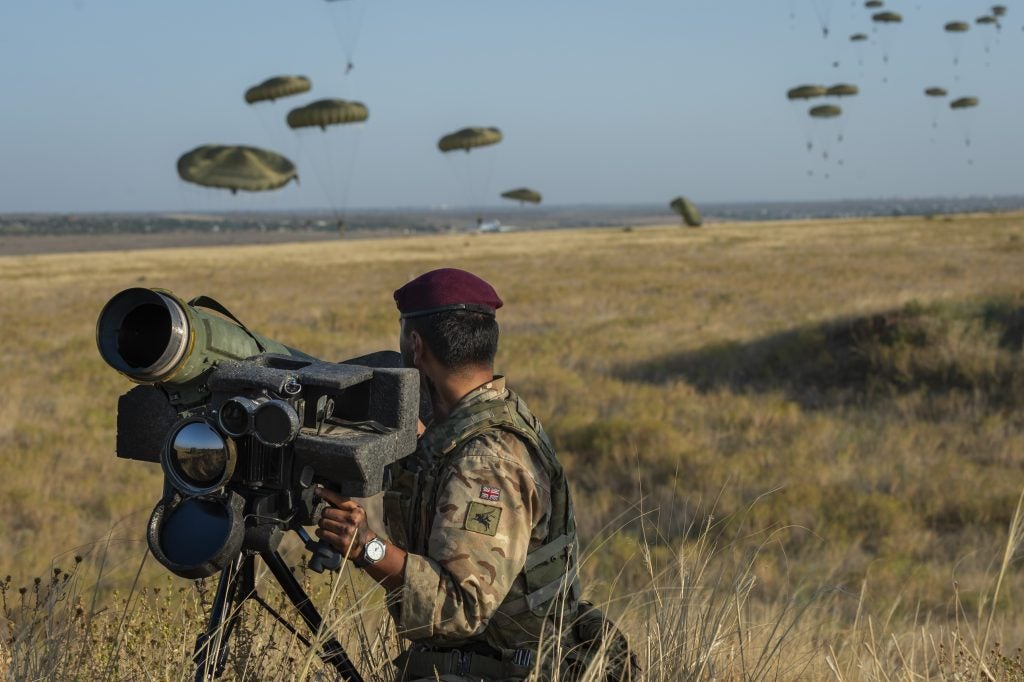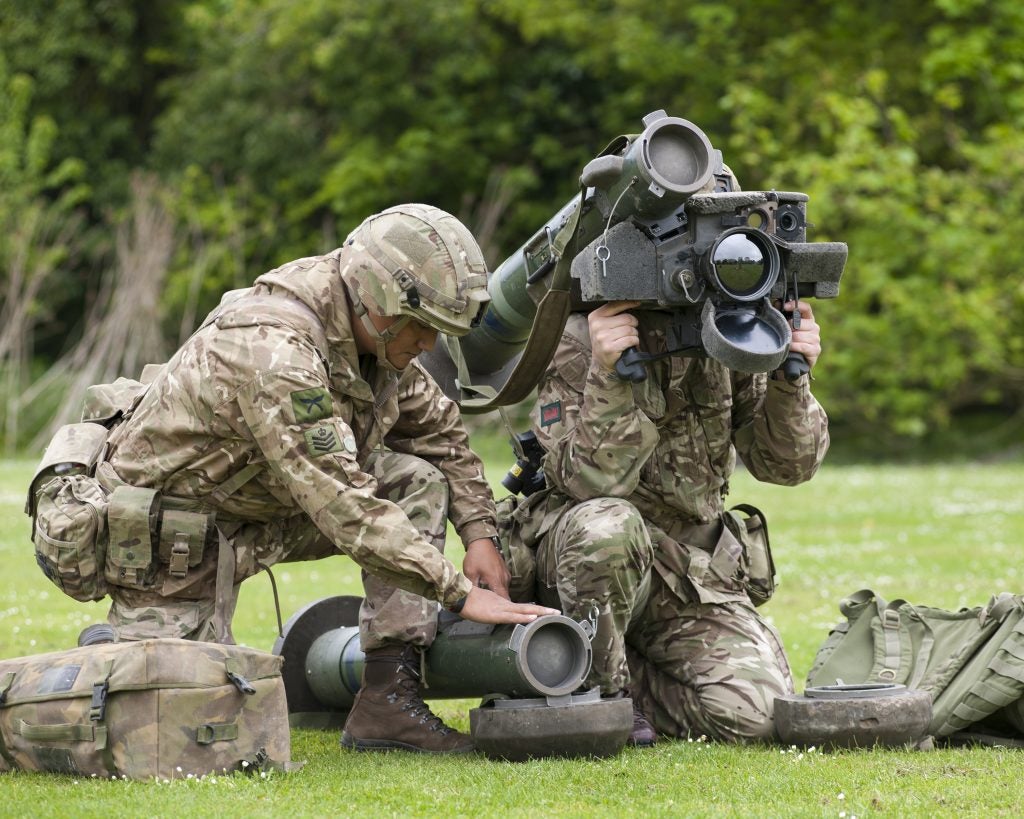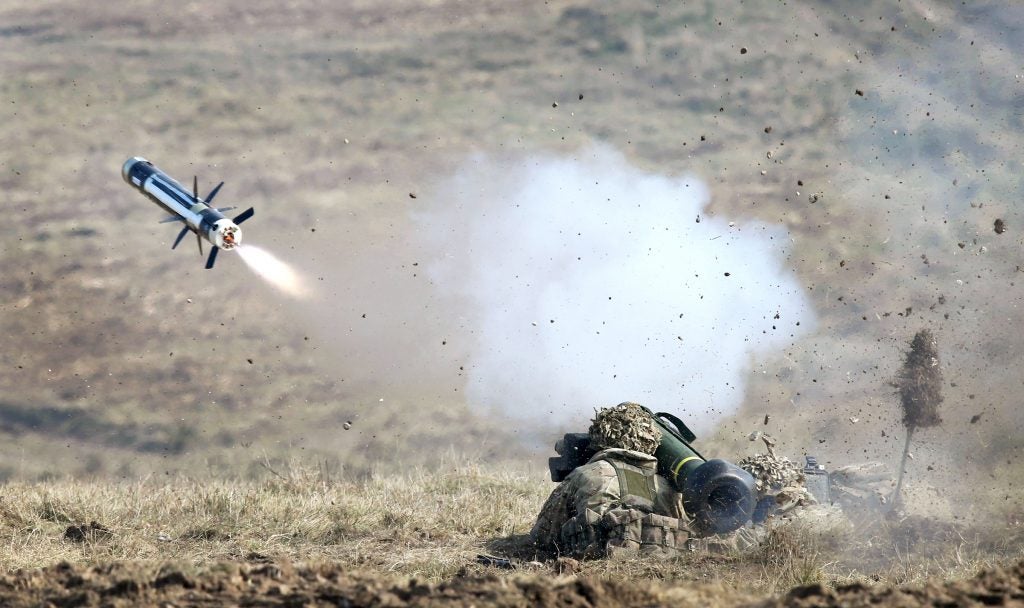How Does a Possible Javelin Lightweight Command Launch Unit Buy Fit with the UK’s Long-term Anti-Tank Plans?
At the start of this month the US Defense Security Cooperation Agency published a notice announcing the approval of a request from the UK for the procurement of Lightweight Command Launch Units for the Javelin anti-tank guided missile system. But how does this procurement fit into the British Army’s Battle Group Organic Anti-Armour plan unveiled in May 2021?
The DSCA notice confirmed that the US State Department has approved the “possible Foreign Military Sale to the Government of the United Kingdom of Javelin Lightweight Command Launch Units (LWCLUs) for an estimated cost of $300 million.” Interestingly, the DSCA notice does not mention the procurement of any further missiles, especially given the UK’s transfer of a considerable number of Javelin missiles and CLU from UK stocks to the armed forces of Ukraine over the past six months. There may be a later procurement to replace this drawdown of UK Javelin stocks. In May, Lockheed Martin announced their intention to double Javelin production from around 2,000 to 4,000 missiles per year in anticipation of considerable upcoming orders.

The UK has requested the purchase of 513 Javelin Lightweight Command Launch Units or LWCLUs from the Javelin Joint Venture (JJV) which brings together the Lockheed Martin Corporation and the Raytheon Technologies Corporation.
The UK has fielded Javelin since 2005 when it was selected to fulfil the Light Forces Anti-Tank Guided Weapon System (LFATGWS) requirement to replace ageing MILAN and Swingfire wire guided systems. With its range of 2,500m it is currently considered the British Army’s medium range anti-tank guided weapon system alongside the Next Generation Light Anti-Tank Weapon (NLAW) which has a maximum engagement range of 600m.
The UK procured some 9,000 Javelin missiles at the time and over 800 of the original launch units when the system was originally selected, at a cost of over £500 million. Javelin was selected to equip the British Army’s Armoured Infanty and Formation Reconnaisance forces as well as light infantry units, the Mechanised Infantry and 3 Commando Brigade. Javelin has since seen active service with British Forces in Iraq and Afghanistan.
“The toughest part of being an anti-tanker is probably the weight on your back,” explained Lance Corporal Dean Brown, a Javelin gunner with the Parachute Regiment in a recent British Army video showcasing Javelin, continuing: “the gunner is going to have a launch tube assembly, CLU, tripod and batteries, on top of his own personal kit so you’re looking at 70kg plus.” The British Army officially lists the Javelin’s ready to fire weight as 24.3kg, with sources stating the weight of the original CLU at either 6.4kg or 7kg.

The new lightweight CLU developed by Javelin Joint Venture was developed to reduce unit cost and the weight of the system and is always interoperable with the FIM-92 Stinger missiles. It was also intended to improve its lethality against non-armoured targets. While specifications vary LWCLU is reportedly 35+% smaller, and 50% lighter, and has a 50% battery life increase is said to have a maximum engagement range of 4,000m or 2.5 miles, a significant increase on the original CLU.
So where does this fit into the British Army’s Battle Group Organic Anti-Armour (BGOAA) which has 3 focus areas: Close-In Self Defence (CISD), Mounted Close Combat Overwatch (MCCO), Close Combat Anti-Armour Weapons (CCAAW). These areas were outlined by the Defence Science and Technology Laboratory in May 2021 and aim to select future weapon systems in the 2030s.

Details on these areas are limited but Close Combat Anti-Armour Weapons is set to be the program which seeks Javelin’s successor. It will likely require an effective range greater than 5km but less than 10km. The MCCO program will provide a 50+kg missile which a range of 10km.
Given that even improved Javelin can’t reach the ranges desired by CCAAW it is likely that the procurement of LWCLU is a part of a capability sustainment program which aims to extend the service life and lethality of Javelin until the CCAAW program selects its future replacement which offers more capability.

